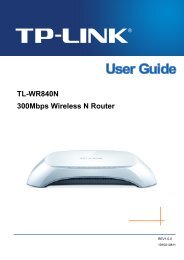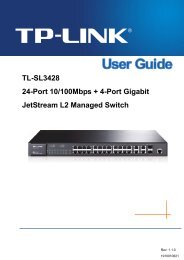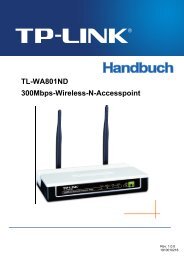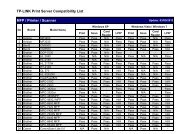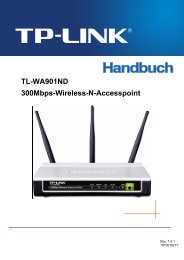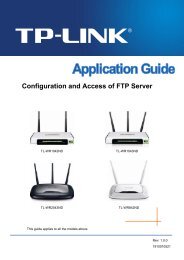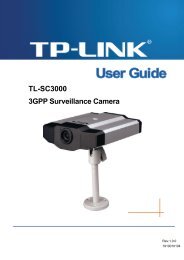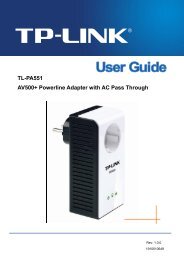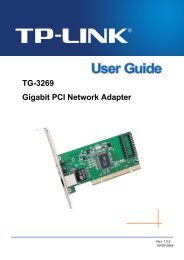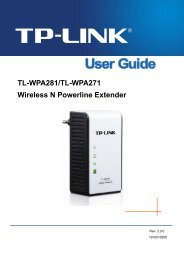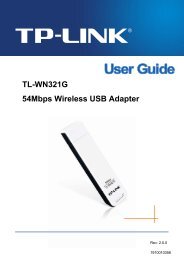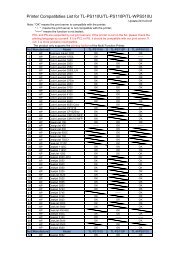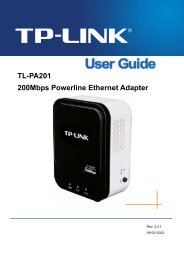TL-WR841N TL-WR841ND 300Mbps Wireless N Router - TP-Link
TL-WR841N TL-WR841ND 300Mbps Wireless N Router - TP-Link
TL-WR841N TL-WR841ND 300Mbps Wireless N Router - TP-Link
Create successful ePaper yourself
Turn your PDF publications into a flip-book with our unique Google optimized e-Paper software.
<strong>TL</strong>-<strong>WR841N</strong>/<strong>TL</strong>-<strong>WR841N</strong>D<strong>300Mbps</strong> <strong>Wireless</strong> N <strong>Router</strong>Click the Next button to go to the next page and click the Previous button to return the previouspage. Note:If you set the service port of the virtual server as 80, you must set the Web management port on“Security → Remote Management” page to be any other value except 80 such as 8080.Otherwise there will be a conflict to disable the virtual server.4.8.2 Port TriggeringChoose menu “Forwarding → Port Triggering”, you can view and add port triggering in the screenas shown in Figure 4-33. Some applications require multiple connections, like Internet games, videoconferencing, Internet calling and so on. These applications cannot work with a pure NAT <strong>Router</strong>.Port Triggering is used for some of these applications that can work with an NAT <strong>Router</strong>.Figure 4-33 Port TriggeringOnce the <strong>Router</strong> is configured, the operation is as follows:1. A local host makes an outgoing connection using a destination port number defined in theTrigger Port field.2. The <strong>Router</strong> records this connection, opens the incoming port or ports associated with thisentry in the Port Triggering table, and associates them with the local host.3. When necessary, the external host will be able to connect to the local host using one of theports defined in the Incoming Ports field.‣ Trigger Port - The port for outgoing traffic. An outgoing connection using this port will triggerthis rule.‣ Trigger Protocol - The protocol used for Trigger Ports, either TCP, UDP, or All (allprotocols supported by the <strong>Router</strong>).‣ Incoming Ports Range - The port or port range used by the remote system when itresponds to the outgoing request. A response using one of these ports will be forwarded tothe PC that triggered this rule. You can input at most 5 groups of ports (or port sections).Every group of ports must be set apart with ",". For example, 2000-2038, 2050-2051, 2085,3010-3030.‣ Incoming Protocol - The protocol used for Incoming Ports Range, either TCP or UDP, or- 55 -



